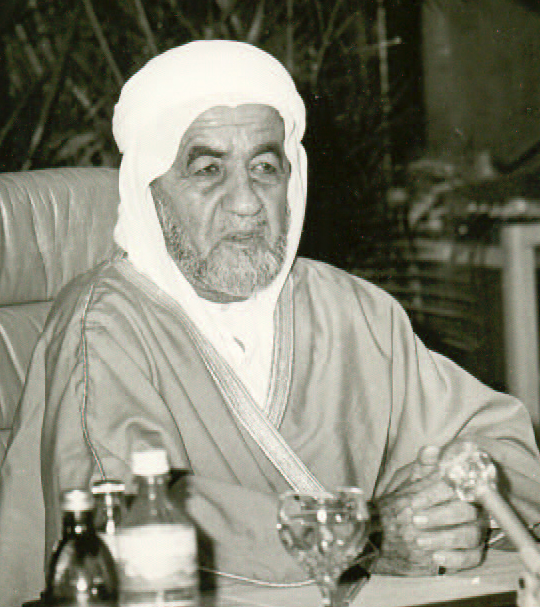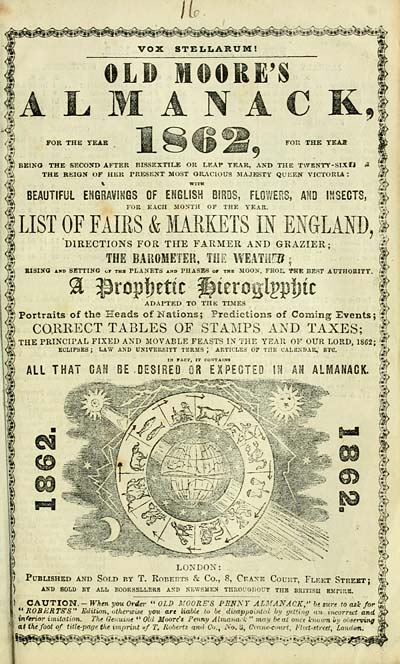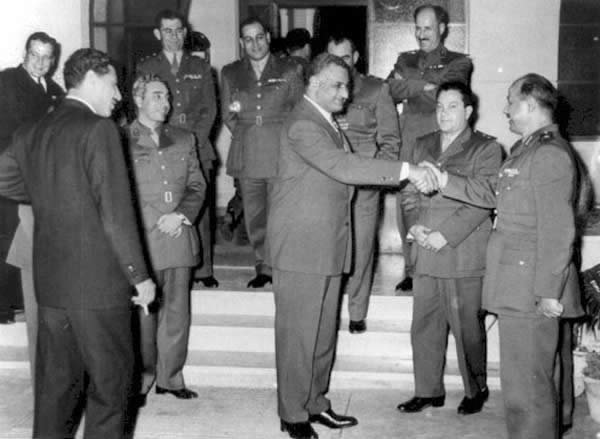|
Qatari Literature
Qatari literature traces its origins back to the 19th century. Originally, written poetry was the most common form of expression, but poetry later fell out of favor after Qatar began reaping the profits from oil exports in the mid-20th century and many Qataris abandoned their Bedouin traditions in favor of more urban lifestyles. Due to the increasing number of Qataris who began receiving formal education during the 1950s and other significant societal changes, the following years saw the introduction of Short story, short stories, and later, novels. Poetry, particularly the predominant nabati form, retained some importance but would soon be overshadowed by other literary types. Unlike most other forms of art in Qatari society, females have been involved in the modern literature movement on a similar magnitude to males. Early Qatari literature Literature in Qatar is typically divided into two periods: 1800–1950 and 1950–present. This divide is due to the vast societal changes ... [...More Info...] [...Related Items...] OR: [Wikipedia] [Google] [Baidu] [Amazon] |
Oman
Oman, officially the Sultanate of Oman, is a country located on the southeastern coast of the Arabian Peninsula in West Asia and the Middle East. It shares land borders with Saudi Arabia, the United Arab Emirates, and Yemen. Oman’s coastline faces the Arabian Sea to the southeast and the Gulf of Oman on the northeast. The exclaves of Madha and Musandam Governorate, Musandam are surrounded by the United Arab Emirates on their land borders, while Musandam’s coastal boundaries are formed by the Strait of Hormuz and the Gulf of Oman. The capital and largest city is Muscat. With a population of approximately 5.46 million and an area of 309,500 km2 (119,500 sq mi), Oman is the Countries with highest population, 123rd most-populous country. From the 18th century, the Omani Sultanate was Omani Empire, an empire, competing with the Portuguese Empire, Portuguese and British Empire, British empires for influence in the Persian Gulf and the Indian Ocean. At its peak in the 19th ce ... [...More Info...] [...Related Items...] OR: [Wikipedia] [Google] [Baidu] [Amazon] |
Qatari Almanac
The Qatari Almanac () was an annual almanac authored by religious scholar Sheikh Abdullah Ibrahim Al-Ansari that integrated traditional and astronomical knowledge, offering invaluable insights into prayer timings, seasonal weather patterns, and local celestial navigation across the Persian Gulf region. Following his father's legacy, Al-Ansari published the almanac since 1957–58, incorporating knowledge from ancient Arabic texts and almanacs, including one from 1906 by Sheikh Abdulaziz bin Abdullah Al-Uyuni of Al-Ahsa Oasis, Al Hasa, which he republished in 1960 under Emir Ali bin Abdullah Al Thani's sponsorship. It was the most widely disseminated almanac among the Arab states of the Persian Gulf. In 1966, the almanac was formally declared as the official calendar of Qatar by Emir Ahmad bin Ali Al Thani. The Qatari Almanac integrated formal astronomical knowledge with local time-keeping systems. It featured charts detailing the zodiacal months, lunar stations, planets, the lunar ... [...More Info...] [...Related Items...] OR: [Wikipedia] [Google] [Baidu] [Amazon] |
Abdullah Bin Ibraheem Al Ansari
{{disambiguation, geo ...
Abdullah may refer to: * Abdullah (name), a list of people with the given name or surname * Abdullah, Kargı, Turkey, a village * ''Abdullah'' (film), a 1980 Bollywood film directed by Sanjay Khan * '' Abdullah: The Final Witness'', a 2015 Pakistani drama film * Abdullah (band), an American metal band * Abdullah (horse) (1970–2000), a horse that competed in the sport of show jumping * MV Abdullah, 2015 built bulk carrier * "Abdullah" (''I Dream of Jeannie''), a 1968 television episode See also * Abdalla people, an ethnic group in Kenya * Abdollah (other) * Abdulla (other) Abdullah may refer to: * Abdulla, another form of the name Abdullah * Arkin Abdulla, Uyhghur musician * Abdul Samad Abdulla, Maldivian politician and the Minister of Foreign Affairs * Shakhawan Abdulla, Iraqi politician * ''Abdulla'' (1960 fil ... [...More Info...] [...Related Items...] OR: [Wikipedia] [Google] [Baidu] [Amazon] |
Persian Gulf
The Persian Gulf, sometimes called the Arabian Gulf, is a Mediterranean seas, mediterranean sea in West Asia. The body of water is an extension of the Arabian Sea and the larger Indian Ocean located between Iran and the Arabian Peninsula.United Nations Group of Experts on Geographical NameWorking Paper No. 61, 23rd Session, Vienna, 28 March – 4 April 2006. accessed 9 October 2010 It is connected to the Gulf of Oman in the east by the Strait of Hormuz. The river delta of the Shatt al-Arab forms the northwest shoreline. The Persian Gulf has many fishing grounds, extensive reefs (mostly rocky, but also Coral reef, coral), and abundant pearl oysters, however its ecology has been damaged by industrialization and oil spills. The Persian Gulf is in the Persian Gulf Basin, which is of Cenozoic origin and related to the subduction of the Arabian plate under the Zagros Mountains. The current flooding of the basin started 15,000 years ago due to sea level rise, rising sea levels of ... [...More Info...] [...Related Items...] OR: [Wikipedia] [Google] [Baidu] [Amazon] |
Qatari Art
The modern Qatari art movement emerged in the mid-20th century, as a result of the new-found wealth acquired from oil exports and the subsequent modernization of Qatari society. Because of Islam's non-inclusive stance of depictions of sentient beings in visual arts, traditional figurative art historically played an insignificant role in the country's culture. Other visual art forms such as calligraphy, architecture, and textiles were more highly regarded in Qatari tradition.A. Abu Saud (1984), p. 140 Modern visual arts Origins Historically, figurative art was not a feature of Qatari society due to Islamic traditions, and as a result, illustrative art forms such as paintings and drawings were rare. Instead, other visual art forms such as architecture, calligraphy and textiles were more highly valued. However, during the oil boom in the 1950s and 1960s, figurative art began to gain popularity, with common themes focusing on Islamic and Arabic heritage. The Ministry of Education p ... [...More Info...] [...Related Items...] OR: [Wikipedia] [Google] [Baidu] [Amazon] |
Sunni Islam
Sunni Islam is the largest Islamic schools and branches, branch of Islam and the largest religious denomination in the world. It holds that Muhammad did not appoint any Succession to Muhammad, successor and that his closest companion Abu Bakr () rightfully succeeded him as the caliph of the Muslim community, being appointed at the meeting of Saqifa. This contrasts with the Succession of ʿAlī (Shia Islam), Shia view, which holds that Muhammad appointed Ali, Ali ibn Abi Talib () as his successor. Nevertheless, Sunnis revere Ali, along with Abu Bakr, Umar () and Uthman () as 'Rashidun, rightly-guided caliphs'. The term means those who observe the , the practices of Muhammad. The Quran, together with hadith (especially the Six Books) and (scholarly consensus), form the basis of all Fiqh, traditional jurisprudence within Sunni Islam. Sharia legal rulings are derived from these basic sources, in conjunction with Istislah, consideration of Maslaha, public welfare and Istihsan, jur ... [...More Info...] [...Related Items...] OR: [Wikipedia] [Google] [Baidu] [Amazon] |
Maliki School
The Maliki school or Malikism is one of the four major schools of Islamic jurisprudence within Sunni Islam. It was founded by Malik ibn Anas () in the 8th century. In contrast to the Ahl al-Hadith and Ahl al-Ra'y schools of thought, the Maliki school takes a unique position known as ''Ahl al-Amal'', in which they consider the Sunnah to be primarily sourced from the practice of the people of Medina and living Islamic traditions for their rulings on Islamic law. The Maliki school is one of the largest groups of Sunni Muslims, comparable to the Shafi’i madhhab in adherents, but smaller than the Hanafi madhhab. Sharia based on Maliki Fiqh is predominantly found in North Africa (excluding parts of Egypt), West Africa, Chad, Sudan and the Arabian Gulf. In the medieval era, the Maliki school was also found in parts of Europe under Islamic rule, particularly Islamic Spain and the Emirate of Sicily. A major historical center of Maliki teaching, from the 9th to 11th centuries, was ... [...More Info...] [...Related Items...] OR: [Wikipedia] [Google] [Baidu] [Amazon] |
Almanac
An almanac (also spelled almanack and almanach) is a regularly published listing of a set of current information about one or multiple subjects. It includes information like weather forecasting, weather forecasts, farmers' sowing, planting dates, tide tables, and other table (information), tabular data often arranged according to the calendar. Celestial figures and various statistics are found in almanacs, such as the sunrise, rising and sunset, setting times of the Sun and Moon, dates of eclipses, hours of high and low tides, and religious festivals. The set of events noted in an almanac may be tailored for a specific group of readers, such as farmers, sailors, or astronomers. Name The etymology of the word is unclear. The earliest documented use of the word in something like its current sense is in Latin in 1267. Roger Bacon used it to mean a set of tables detailing movements of heavenly bodies including the Moon. It has been suggested that the word ''almanac'' derives fro ... [...More Info...] [...Related Items...] OR: [Wikipedia] [Google] [Baidu] [Amazon] |
Pan-Arabism
Pan-Arabism () is a Pan-nationalism, pan-nationalist ideology that espouses the unification of all Arabs, Arab people in a single Nation state, nation-state, consisting of all Arab countries of West Asia and North Africa from the Atlantic Ocean to the Arabian Sea, which is referred to as the Arab world. It is closely connected to Arab nationalism, which asserts the view that the Arabs constitute a single nation. It originated in the late 19th century among the Arab regions of the Ottoman Empire, and its popularity reached its height during the peak of Nasserism and Ba'athism in the 1950s and 1960s. Advocates of pan-Arabism have often espoused Arab socialism, Arab socialist principles and strongly anti-Western sentiment, opposed the political involvement of the Western world in the Arab world. It also sought to empower Arab states against outside forces by forming alliances such as the Arab League. Origins and development The origins of pan-Arabism are often attributed to the ... [...More Info...] [...Related Items...] OR: [Wikipedia] [Google] [Baidu] [Amazon] |
United Arab Republic
The United Arab Republic (UAR; ) was a sovereign state in the Middle East from 1958 to 1971. It was initially a short-lived political union between Republic of Egypt (1953–1958), Egypt (including Occupation of the Gaza Strip by the United Arab Republic, Egyptian-governed Gaza) and Second Syrian Republic, Syria from 1958 until Syria seceded from the union following the 1961 Syrian coup d'état. Egypt continued to be known officially as the United Arab Republic until it was formally dissolved by Anwar Sadat in September 1971. The republic was led by Gamal Abdel Nasser as the President of Egypt, Egyptian president. The UAR was a member of the United Arab States, a loose confederation with the Kingdom of Yemen, Mutawakkilite Kingdom of Yemen, which was dissolved in 1961. It was a brief pan-Arab union. History Origins The United Arab Republic was established on 1 February 1958 as the first step towards a larger Pan-Arabism, pan-Arab state, originally being proposed to Egyptian ... [...More Info...] [...Related Items...] OR: [Wikipedia] [Google] [Baidu] [Amazon] |
Gamal Abdel Nasser
Gamal Abdel Nasser Hussein (15 January 1918 – 28 September 1970) was an Egyptian military officer and revolutionary who served as the second president of Egypt from 1954 until his death in 1970. Nasser led the Egyptian revolution of 1952 and introduced Land reform in Egypt, far-reaching land reforms the following year. Following a 1954 Attempted assassination of Gamal Abdel Nasser, assassination attempt on his life by a Muslim Brotherhood member, he cracked down on the organization, put President Mohamed Naguib under house arrest and assumed executive office. He was 1956 Egyptian referendum, formally elected president in June 1956. Nasser's popularity in Egypt and the Arab world skyrocketed after his Suez Canal Authority, nationalization of the Suez Canal and his political victory in the subsequent Suez Crisis, known in Egypt as the ''Tripartite Aggression''. Calls for Arab Union, pan-Arab unity under his leadership increased, culminating with the formation of the United Ar ... [...More Info...] [...Related Items...] OR: [Wikipedia] [Google] [Baidu] [Amazon] |








